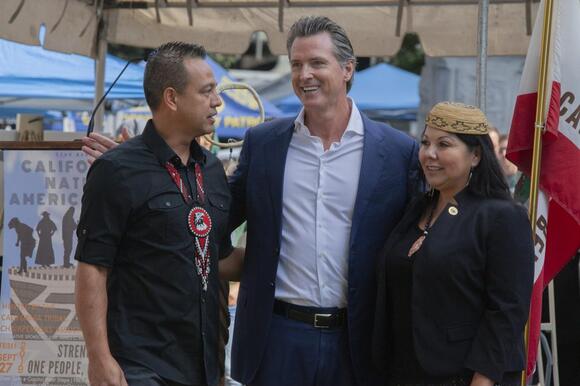Introduction: The Rich and Complex History of Native Americans
Native Americans have a history that spans thousands of years, deeply intertwined with the North American landscape. Long before European explorers set foot on the continent, Native American tribes had already established rich and complex societies. Their connection to the land is profound, and their traditions and customs have been passed down through generations. Despite facing numerous challenges, including colonization and forced relocation, Native Americans have shown remarkable resilience. Their influence is evident in various aspects of American culture, law, and society. To truly appreciate the history of the United States, it is essential to recognize the contributions and struggles of Indigenous peoples.
Ancient Civilizations and Early Societies

Before the arrival of Europeans, Native American civilizations flourished across North America. These societies were not only diverse but also highly advanced. The Mississippian culture, for instance, was known for its impressive earthen mounds, as seen in Cahokia, Illinois. This city was a bustling hub of trade and religious practices, showcasing the complexity of Native societies. In the Southwest, the Ancestral Puebloans built remarkable cliff dwellings, evidence of their architectural prowess. Meanwhile, the Iroquois Confederacy in the Northeast established one of the earliest forms of democratic governance. These civilizations highlight the sophistication and diversity of Native American societies long before European contact.
European Arrival and Its Devastating Impact

The arrival of Christopher Columbus in 1492 marked the beginning of a new era for Native Americans, one fraught with challenges. European settlers brought with them diseases to which Native populations had no immunity. Smallpox, measles, and influenza decimated tribes, causing catastrophic losses. Beyond disease, the colonization of the Americas led to violent conflicts and forced removals. Treaties were often disregarded, and Native lands were seized. While some tribes attempted to coexist through trade and alliances, tensions frequently escalated into wars. Leaders like Tecumseh and Sitting Bull valiantly resisted European expansion, but the overwhelming force of colonizers continued to push Native Americans westward.
The Trail of Tears and Forced Relocation

The 19th century saw the U.S. government implement policies that further displaced Native Americans. The Indian Removal Act of 1830, signed by President Andrew Jackson, led to the forced relocation of thousands of Native Americans. The Trail of Tears, perhaps the most infamous of these relocations, saw the Cherokee people endure a harrowing journey from Georgia to Oklahoma. Thousands perished due to harsh conditions, disease, and starvation. As settlers expanded westward, many tribes were confined to reservations on less fertile land. This period marked a significant loss of cultural traditions and widespread suffering for Native communities.
Native American Resistance and Survival

Despite the adversities faced, Native American tribes continued to resist and fight for their rights. The 19th and early 20th centuries were marked by conflicts such as the Sioux Wars and the Battle of Little Bighorn, where Native warriors fiercely defended their lands. At Little Bighorn, the combined forces of the Lakota Sioux and Cheyenne, led by Sitting Bull and Crazy Horse, achieved a rare victory against General George Custer’s forces. However, this triumph was short-lived, as the U.S. government intensified efforts to control Native lands. The late 1800s also saw attempts to erase Native cultures through forced assimilation, with children being sent to boarding schools. Despite these efforts, many tribes managed to preserve their heritage.
The 20th Century: Civil Rights and Recognition

The 20th century brought both challenges and opportunities for Native Americans. In 1924, the Indian Citizenship Act granted U.S. citizenship to all Native Americans, although rights and recognition were still limited. Many left reservations during the Great Depression and World War II for work and military service, integrating into broader American society. The Civil Rights Movement inspired Native Americans to fight for their own rights, leading to the founding of the American Indian Movement (AIM) in 1968. Protests like the Occupation of Alcatraz and the Wounded Knee Standoff highlighted ongoing issues. Slowly, the U.S. government began recognizing Native sovereignty, allowing tribes more self-governance and economic opportunities.
Native Americans Today: Culture, Challenges, and Progress

Today, over 570 federally recognized tribes exist in the United States, each working to preserve their unique languages, traditions, and customs. Native American artists, musicians, and writers are gaining recognition, bringing Indigenous voices to the forefront of mainstream culture. However, many challenges persist. Native communities often face higher rates of poverty, unemployment, and health issues. Access to essential services like education and healthcare remains limited, especially on reservations. Movements like Land Back and Indigenous activism continue to advocate for Native rights and land restoration. Despite these struggles, Native Americans remain resilient and continue to contribute significantly to modern America.
Conclusion: A Legacy That Continues

The history of Native Americans is a testament to their strength and perseverance. From thriving ancient civilizations to the challenges of colonization, Indigenous peoples have consistently fought to protect their lands and cultures. Despite historical injustices, Native Americans have survived, adapted, and reclaimed their identity. Recognizing and understanding their past is crucial to ensuring a better future, where their rights, traditions, and contributions are fully respected. Their story is not just one of the past—it is still being written today.